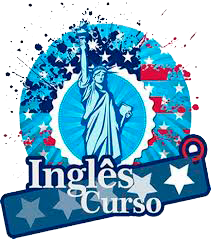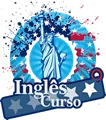My friend Peter Esse texto é para interpretação de alunos iniciantes, é bem básico e você, professor pode trabalhar o verbo to be, e as perguntas que começam com Wh, após os alunos responderem as tarefas, você pode "esticar" a conversação abordando outras perguntas relacionadas, ou não, ao texto. Baixe aqui a folha de atividades
Professor, Este exercício é para desenvolver a habilidade de interpretação de textos e ainda a criatividade dos alunos que podem continuar a história e ler para toda a turma depois. Boa aula! Preencha as lacunas Depois continue a historinha com pelo menos mais 20 linhas. Dica: leia tudo antes de começar a preencher para ter uma melhor idéia do que se trata. Once ________ a time, a ________ years ago, ________ was a girl ________ lived with ________ grandmother in an ________ house in a small ________ in Canada. They always ________ their summers ________ Sunny Town and this ________ they were even ________ because the ________ was great and they ________ probably stay ________ than usual. One ________ before their trip, they received excellent ________: the girl ________ ________ invited to be part of one of the ________ important hotels ________ the city: The Royal Golden Towers. Respostas para as lacunas most in there upon few news been old day had her who spent more weather would city in happier year
Professor, os exercícios abaixo contém as resposta e comentários do professor Fabio Costa e Silva, você pode usar esses exercícios como fonte de inspiração para fazer outros para fixar o uso do presente simples e passado simples. Exercícios Simple Present e Simple Past Exercício 1: Coloque DO DOES DID AM IS ARE WAS WERE HAVE HAS Obs 1 – Há também frases negativas Obs 2 – Pode ser que uma ou outra frase nao precise de nada Obs 3 – É importante entender o vocabulário do exercício. Eis as respostas corretas: 1 – They (were ou weren´t) at the beach yesterday. 2 – I (am not) a stupid guy. (am também está gramaticalmente certo) 3 – (Do) you need glasses ? 4 – I (don´t) need help. I can do it alone. 5 – (Were) you tall when you (were) a child ? 6 – She has _________ to get up early every day. (Não colocar nada mesmo no espaço) 7 – I (was ou wasn´t) expecting to see you when I (was) in hospital that awful day. 8 – If you (don´t) come to my party you will not receive any souvenirs. (Também aceitei "nada" no espaço pois, apesar do significado estranho, fica correto gramaticalmente). 9 – She _________ had to go a few minutes ago. (Não colocar nada mesmo no espaço) 10 – That cute teddy bear (doesn´t) have brown fur like almost all the others. Quase todo mundo errou esta 10. Não se pode deixar o espaço em branco pois o sujeito é singular (it) e não concorda com have. 11 – She (was, wasn´t, is, isn´t) kidding when she said she (was, wasn´t, is, isn´t) angry with you. Mas o ideal nesta 11 é colocar wasn´t na primeira e was na segunda. 12 – (Have) you bought any magazines lately ? 13 – (Don´t) turn off the lights. It’s dark in here. 14 – These (are) good guys. You can trust them. 15 – It (is) a non-stop flight. It (doesn´t) stop anywhere. Também aceitei was + didn´t Obs – non-stop = adjetivo ; stop = verbo 16 – I _________ like him because he _________ dishonest. Opções certas para a questão acima: don´t e is nada e isn´t am not e is am e isn´t 17 – Look ! The cars (are) crashing. 18 – Be prepared to watch a nice _________ show. (Não colocar nada mesmo no espaço) 19 – (Are) you with her ? (Aceitei were também) 20 – (Did ou didn´t) you talk to her when she (was) in Canada ? Exercício 2: Em qualquer língua a conversa precisa ter muitos sinônimos. O uso repetitivo das mesmas palavras torna a conversa chata, enfadonha, e faz a pessoa parecer alguém com pouco vocabulário, poucas idéias. Nas frases do exercício abaixo o objetivo é sempre dizê-las duas vezes de forma parecida, justamente para mostrar a quem lê ou a quem ouve o seu bom conhecimento da língua. Exemplo: How much is this book ? (cost) A palavra em parênteses deve ser usada na segunda frase para formarmos uma semelhante. Para isso, obviamente, teremos que mudar a primeira e não vamos só acrescentar a outra palavra, devemos encaixá-la com o auxílio de outras, para tornar a frase gramaticalmente correta. Então How much is this book? – How much does this book cost? Vamos fazer o mesmo com: How much money do you have? (dollars) – How many dollars do you have? Do you have many friends ? (got) – Have you got many friends ? A policeman´s job is very difficult. (has) – A policeman has a very difficult job. São Paulo was the champion of 2008. (last year) – São Paulo was last year´s champion. Geography is easier than Chemestry. (less) – Geography is less difficult than Chemestry. That man is sweeping the floor. (by) – The floor is being swept by that man. Fabio: "I don´t like liver." – Maria: "I don´t like liver either." (neither) – Neither do I. She´s been living here for 3 years (2006) – She´s been living here since 2006. I don´t have any friends. (no) – I have no friends. This cell phone stopped working an hour ago. (for an hour) -This cell phone hasn´t been working for an hour. She is so beautiful…(such) – She is such a beautiful girl… Maria is my best friend´s girlfriend and she lives in Copacabana. (who) – Maria, who is my best friend´s girlfriend, lives in Copacabana. I need some information. (two) – I need two pieces of information. Fonte: Ingles na ponta da lingua
Telling the time Atividade para reforçar o aprendizado sobre horas. Faça o download da atividade clicando aqui e confira as respostas logo abaixo Answers: 1. It’s quarter past nine. or It’s nine fifteen. 2. It’s eight o’clock. 3. It’s half past five. or It’s five thirty. 4. It’s one o’clock. 5. It’s twenty to four. or It’s three forty. 6. It’s ten past eleven. or It’s eleven ten. 7. It’s five past seven. or It’s seven oh five. 8. It’s ten to four. or It’s three fifty. 9. It’s quarter to two. or It’s one forty five. 10. It’s twenty past twelve. or It’s twelve twenty. 11. It’s twenty five past ten. or It’s ten twenty five. 12. It’s twenty five to five. or It’s four thirty five.
Who are you? Esta atividade é de nível básico, e tem perguntas e respostas pessoais, dá para praticar gramática (Verbo to be e Wh questions), números de 1 a 10, nacionalidade, e verbo to have. Faça o download aqui


